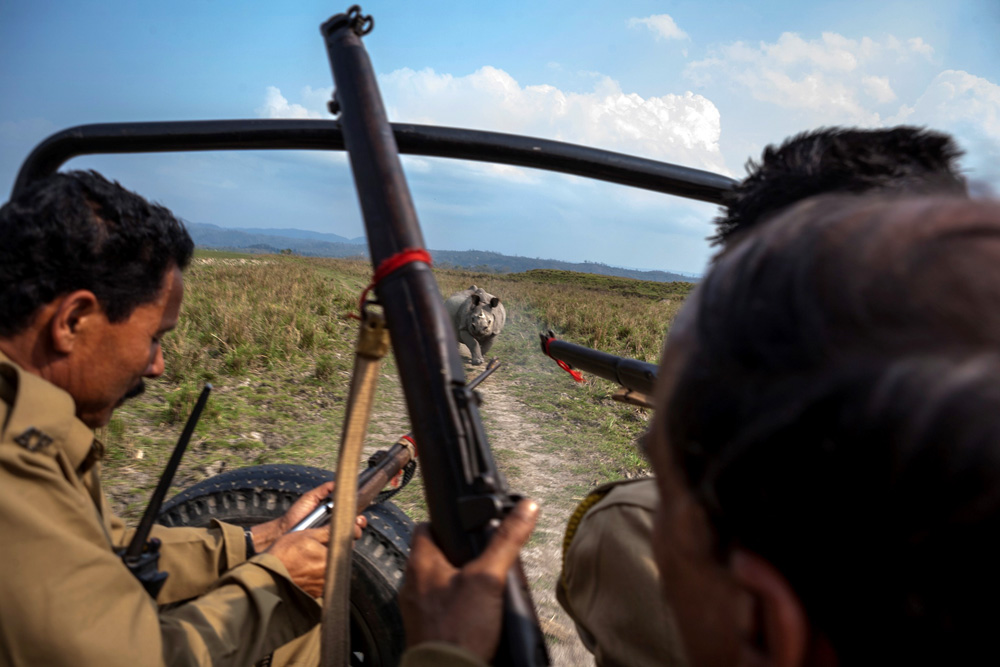-
SHARON GUYNUP, MONGABAY
On the Frontline of India’s Rhino Wars
April 6, 2017 By Wilson Center StaffIn the dead of night on February 15, gunshots blasted the guards into action in India’s Kaziranga National Park. Rangers stationed in a nearby camp quickly spread out, searching for the shooters under the light of a nearly full moon – to no avail.
By morning, they’d located the victim, the park’s first poaching casualty of 2017: a female Indian rhinoceros (Rhinoceros unicornis). They inspected her 3,500-pound body, which was riddled with bullet holes and collected 11 spent cartridges from an AK-47 assault rifle. The gouged wound on her nose marked the spot where her horn had been hacked off.
Welcome to the rhino wars.
The Last Stronghold
Indian (or greater one-horned) rhinos once lived across the subcontinent from Pakistan to Bangladesh. Today they hang on in just a handful of sites in Nepal and India. Kaziranga, in the northeast state of Assam, is the last real stronghold for this massive, prehistoric-looking animal – home to about two-thirds of the 3,500 that remain.
It’s a precarious situation. According to the IUCN, “any catastrophic event in Kaziranga (such as disease, civil disorder, poaching, habitat loss, etc.) would have a devastating impact on the status of this species.”
One of those threats is ever-present. Aron White, a wildlife expert with the London-based Environmental Investigation Agency (EIA), says that “poaching is the main threat to the survival of rhinos today, driven by demand for their horns.”
Sharon Guynup is a public policy fellow at the Wilson Center, where she is working on a book about environmental crime. She writes for National Geographic, The New York Times, and other publications.
Sources: International Union for Conservation of Nature, Mongabay.
Photo Credit: Guards on patrol in Kaziranga National Park, India, used with permission courtesy of Steve Winter/National Geographic Creative.
 A Publication of the Stimson Center.
A Publication of the Stimson Center.




